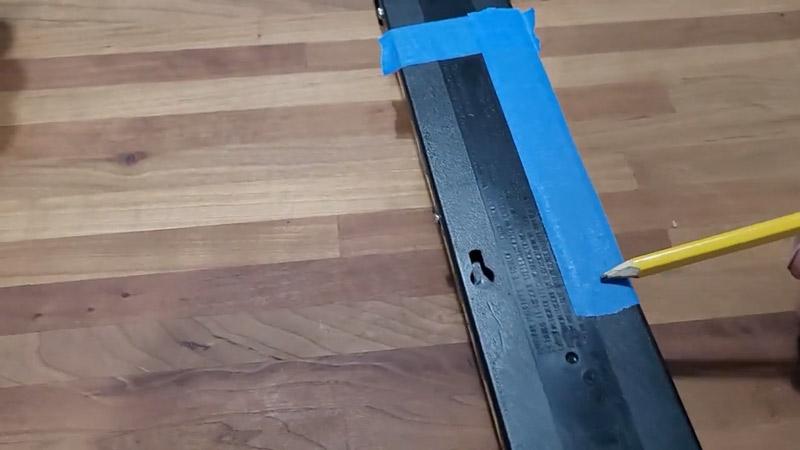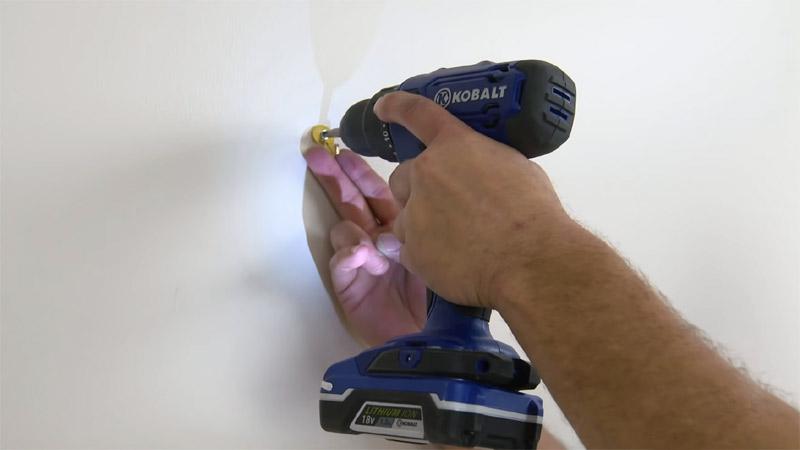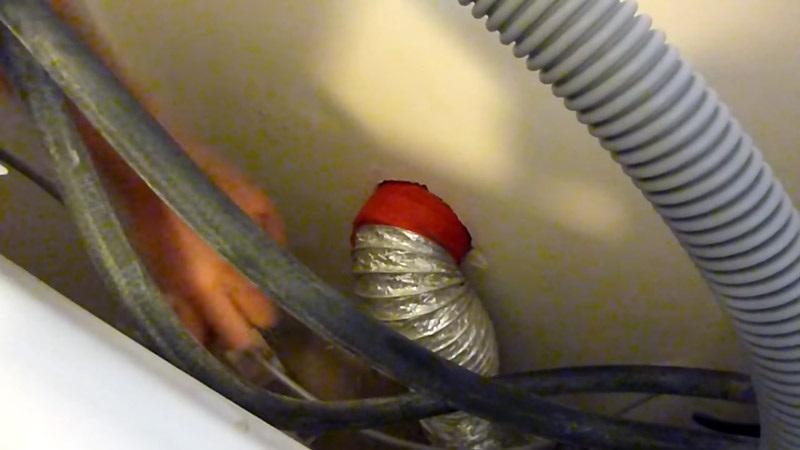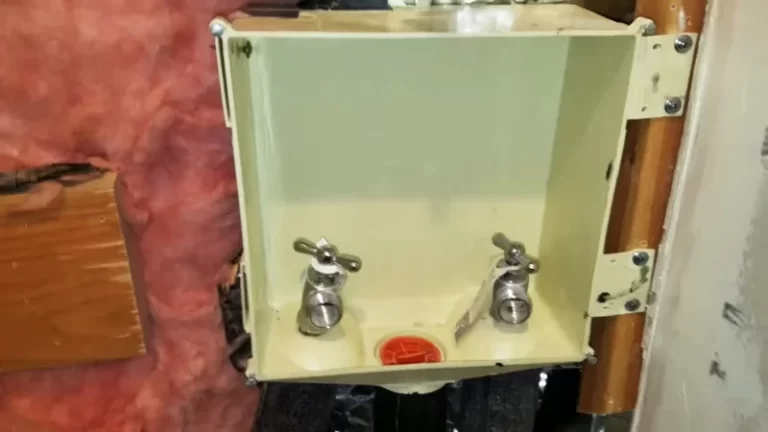How to Reroute Dryer Vent From Garage to Outside?

Dryer vents are used in order to take the air out of the dryer and send it out the roof. Mark the location of your dryer vent in your garage wall. A standard dryer vent is about 2-3/4 inches in diameter.
Use an electric drill and drill a pilot hole the diameter of the dryer vent. Attach a dryer vent extension to the end of the dryer vent and have a length of the vent hose. Use a drill to drill a hole through the dryer vent extension and the wall. The hole should be the size of the hose. Attach the vent hose to the dryer vent extension and the hole in the wall.
Refer to your local building code to find out whether you need to put in an outer vent. Don’t forget to ensure that you have a vent or exhaust fan in your garage.
You'll Learn About
Reroute Dryer Vent From Garage to Outside
A dryer vent is usually installed on a wall or the floor. The vent must be vented to a place where it will not be damaged by any water that might enter the home. If you have a small basement or attic, you can simply vent your dryer in the same room. If you have a larger basement or attic, you’ll need to run it through the ceiling or roof.
The vent duct is often protected by a metal or plastic cap that slides over the end of the duct. A dryer vent pipe is covered by a special vent cap that connects to the dryer exhaust. A dryer vent can be installed in a variety of ways. If you are venting through the wall, you will first have to drill a hole in the wall.
You’ll need to run the vent pipe to the outside wall. If you are venting through the wall, you will need to install the vent pipe through the wall.
Step 1: Find the Spot and Mark
If you have a basement, the exhaust duct should be installed in the basement or exterior wall or attic. As long as the exhaust duct is installed within 25 feet of the dryer, you’ll be fine. The exhaust port should be located horizontally through the dryer. The exhaust duct should be sized to the area that the dryer occupies.

Now it’s important to mark the place where it should be. The exhaust duct will need to be connected to a vent pipe that’s at least 6 inches in diameter. The vent pipe should be located below the roof line. The vent pipe should connect to the exhaust duct. The problem will be fixed.
Step 2: Drill Pilot Hole
Use a drill to drill a hole in the center of where you want the vent to be installed. First, mark the center hole, where you will drill the pilot hole. Measure the diameter of your vent from this hole. Use a tape measure or a ruler to measure the circumference around the marked pilot hole.

Make sure you have a drill with a pilot bit that can drill holes up to 3/8” in diameter. The diameter of your vent is 3/8”. Drill a pilot hole from the interior of your house to the exterior. If you have a concrete foundation, you may want to first drill a hole in the foundation to avoid destroying it.
The dryer vent is typically installed outside the house. Drill a hole in the plastic cover of the vent. Unscrew the cap and remove the dryer vent.
Step 3: Drill the Wall from outside
Go outside and see the pilot hole you had earlier drilled from the interior. Mark around the hole or the circumference where you will install the vent. Drill slightly into the wall along the whole circumference. Use a hammer and chisel to knock out the brick inside the circumference until you create a hole the size of your vent through the wall.
You can also use a screwdriver to pry the brick out. Pushing the brick outward against the concrete wall will create the opening for the vent. Once the brick is removed, you can see the brick insulation and a hole in the vent. The hole should be large enough to accommodate the vent.
To ensure that you’ll have enough space for the vent, remove the brick insulation. If you do not want to drill, you can choose to cut the vent with a hacksaw.
Step 4: Install the Outer Vent
Remove the dryer vent cover and ensure the vent is clean. Remove the dryer vent from the wall if it’s not already installed. Ensure the vent is installed through the back wall of the garage. Make sure the vent is well-leveled to prevent water from seeping through. Install the vent through the wall and attach it to the dryer.
Install the vent cover and caulk the edges. Make sure to caulk around the vent cover, as the vent is only good for one use. The dryer vent is a quick way to vent excess humidity from the garage. If you have a problem with moisture in the garage, install the vent to keep your home dry.
Step 5: Install the Vent Hose inside
Go back into the house, and attach one end of the aluminum hose to the vent you installed from the outside. Clasp the hose and the vent using a clamp. Tighten the clamp using a 5/16-inch drill bit, though you can still use a regular screwdriver. Ensure it fits snugly. Slide the clamp on the other end of the aluminum hose and attach it to the dryer vent outlet.

Tighten the clamp. Caulk around the aluminum hose, which is the point it joins to the dryer vent outlet. You can use a rubber gasket to seal the joint, but the aluminum hose is a better option. This procedure is important because it allows you to easily access the vent.
As you’re installing the vent, the hose should be perpendicular to the outlet you installed. If you have an existing vent, you can repair it by simply replacing the existing vent with a new one. The aluminum hose is easy to install.
Should you Vent the Dryer in the Garage?
In a simple answer, NEVER!
A gas dryer uses a fan to draw air through the dryer. If the blower fails, the exhaust may become blocked and the dryer will continue to draw oxygen from the air, which will combine with the leaking carbon monoxide to form carbon dioxide, a gas that is heavier than air.
The result: the dryer will collect carbon monoxide, which is deadly. Carbon monoxide can be removed from the air in two ways:
- Exhaust should be vented to the outdoors.
- The dryer should be vented to the outside air, which will cause the carbon monoxide to be trapped in the air.
A properly vented dryer will keep the carbon monoxide levels in the garage or basement below the EPA’s recommended maximum. If you have questions about venting a dryer, please call a professional service. If you don’t have a building permit, you can call your local city building inspector to see if you need one. In a pinch, you can also vent the dryer outside.
Are Indoor Dryer Vents Legal?
Dryer vents should be vented to the outside. In Colorado, dryers must be vented either to the outside or to the inside, but not both. Manufacturers might not include an instruction on how to vent dryer exhaust outside of a home. If you live in Colorado, find out what your local code says about dryer ventilation.
If your code allows outdoor venting, do it. If the dryer vent passes the inspection, use a dust collector or ducting to ensure that the dryer exhaust is not venting into your home. If your local code does not allow for indoor venting, close the dryer vent holes you have, and seal the unit with caulking.
The best way to ensure that you’re not violating your local code is to install a dryer exhaust system, which will include an exhaust duct and a filter. Indoor dryer vents are illegal in most states, and you should find out what your local code says about indoor dryer vents.
If you have a dryer with multiple vents, install an air intake vent on the side of your home to ensure that the exhaust of your dryer is not venting out of your house.
Where Should a Dryer Vent Be Located?
The dryer vent location should be near the dryer to keep the exhaust from pulling in cold air and pulling moisture into the house. Dryers should always be vented through the exterior wall near the dryer. Dryers can be vented through the basement or attic, but they should always be vented to the exterior wall.
Most dryer models can only run a short distance from the exhaust to the outlet. All dryers should be vented to the exterior wall. If you have a vent installed in the basement or attic, it should be vented to the exterior wall.
If your dryer vent is blocked, it’s a good idea to check the vent for ice and debris. If you have an attic or basement, you may have problems with moisture and mold. Dryer vents should be vented outside of the house. If you have a blocked dryer vent, follow the manufacturer’s instructions for clearing the vent.
Frequently Asked Questions
Where should the dryer vent be?
Dryer vents should be located in the exterior wall of your garage, near the ceiling. A vent in the garage can be tricky to install. You can install the vent from the outside, but you’ll need to drill a hole into the exterior wall and knock out bricks to create a vent hole. The vent should be positioned in the wall that is closest to the dryer, where it will be within the range of the airflow.
If the dryer vent is located in the ceiling of the garage, you’ll need to drill a hole into the ceiling, remove the brick, and install the vent. If you have a large opening in your garage, you can install a vent through the wall.
This vent will be located in the ceiling of the garage, near the dryer. If you don’t have a dryer, you can simply install a vent in the wall. You can install a vent in the wall from the outside of the garage, but you’ll need to drill a hole. If you have a large opening in the garage that requires a vent, you can install it through the wall.
Are Aluminium hoses hard to install?
Aluminum hoses are a bit of a pain to install, but the convenience of using them outweighs the hassle. Once installed, you’ll need to caulk any cracks around the aluminum vent hose. The aluminum vent hose is a great alternative to a plastic vent hose because it is made of air- and moisture-resistant material.
The aluminum vent hose can be installed in the wall, depending on where it is needed. The aluminum vent hose is easy to install, and you won’t have to drill a hole through the wall. The aluminum vent hose comes in a variety of sizes and styles. The aluminum vent hose can be purchased at most hardware stores.
It is necessary to ensure the aluminum vent hose is installed properly to avoid leaks. The aluminum vent hose is a great investment that will save you from having to drill a hole in your garage to install a dryer vent.
To Recap
In this article, we’ve discussed rerouting a dryer vent from outside to the garage. Hope it will help you. Don’t forget to mention it in the comments section!



